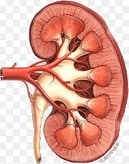
Funding overview for the pharmaceutical industry and outlook for 2020
pharmafile | March 2, 2020 | Feature | Business Services, Manufacturing and Production, Medical Communications, Research and Development, Sales and Marketing | 2020, M&A, MA, feature, mergers & acquisitions, opinion, pharma
This article was originally published in the January/February 2020 issue of Pharmafocus.
With the advent of a New Year, Michael Jewell, Partner, Healthcare at Cavendish Corporate Finance, looks back to 2019 and beyond to give his predictions for the value and volume of mergers and acquisitions activity in 2020.
As someone who has advised on many successful sales mandates across the pharmaceutical sector, the end of one year and the beginning of another is typically a good time to gauge how the funding environment for the sector is doing, and how it’s likely to fare in the following twelve months.
What’s striking at first is that slowing global economic growth and continuing geopolitical tension has undoubtedly seen many sectors suffer a drop in mergers and acquisitions (M&A) activity, as companies put any expansion plans on hold. However, what’s perhaps more striking is that pharma M&A seems to buck this trend, with deal value in 2019 increasing. Indeed, the top ten transactions announced in the first six months of 2019 alone reached a total value 47% higher than the top ten deals in the first half of 2018.
Taking a slightly longer term view also shows how well pharma has fared compared to many other sectors. In fact, the last five years has witnessed over 400 mergers and acquisitions across pharma, especially within the sub-sectors of gene therapy, immune-oncology and orphan drugs therapeutic categories.
Of course, it should be remembered that deal volume and value is affected by numerous factors. One factor in particular which has characterised pharma M&A is strategic acquisition, which has undoubtedly caused M&A levels to be sustained even in the face of wider difficult market conditions.
So what might 2020 hold in store? I would suggest there are three key themes in particular which are likely to feature in this new year: first, the prevalence of mega-deals to continue to prop up average deal value; second (and somewhat contradictory), larger firms will continue to acquire smaller, more specialised firms in order to sustain their ability to innovate; third, the incursion of Big Tech into pharma will lead to a new era of either fruitful cooperation or disruptive conflict with Big Pharma.
It’s worth looking at each in turn.
“Big is beautiful…”
As alluded to, a defining feature of the pharma sector in 2019 was the scale and number of mega-deals, even compared to 2018.
Many readers will be familiar with how, in 2018, Japan’s Takeda became one of the top 10 pharmaceutical firms by revenue after its purchase of Shire, making it only the second non-American or European firm in the top ten. At the same time, many will remember GSK’s buy-out of Novartis’ stake in their consumer health joint venture for $13 billion, in addition to acquiring Tesaro for $5 billion (and in so doing increasing its oncology offering and expertise).
2019, however, had barely begun when Bristol-Myers Squibb acquired Celgene and so bolstered its immunotherapy and oncology departments. Later on, AbbVie of course acquired Allergan in June for $63 billion, resulting in a company that will own Humira, the world’s best-selling drug, alongside Botox.
Lest anyone think the last two years were exceptions it should be remembered that the industry has witnessed more $40 billion-plus deals in the last 10 years than any other sector.
So I would expect mega deals to continue, but there is a caveat. As you will have noticed, the motives behind these deals are multi-faceted: yes, there is often the pull of market consolidation through greater scale, but another key feature is innovation. In this regard, M&A is the route to enabling firms to bolster their product portfolios with innovative products, without undertaking the high-cost and risk of R&D. Indeed, a key theme of the deals I have mentioned has been oncology and immunotherapy, with M&A allowing Big Pharma to increase their offering in these areas without a long R&D process that has no guarantee of success. And so it’s these types of strategic acquisitions which I suspect we’ll see more of too.
“…but small is necessary”
Let’s get to the heart of why strategic acquisitions are on the up. As any good player in the sector knows, innovation is the lifeblood of a successful pharma business. Never mind resting on past laurels – if firms fail to innovate in terms of the products they offer, they won’t be able to retain market share.
However, the seismic change of recent years is that, thanks to advances in technology, innovation is no longer the preserve of Big Pharma and is instead becoming increasingly spread throughout the sector. Indeed, research carried out by McKinsey has shown that the share of revenues coming from innovations outside of Big Pharma has grown from 25% in 2001 to almost 50% in 2016.
At the same time, though, there has been a clear shift away from Big Pharma focusing on internal R&D. How does Big Pharma therefore fill the gap? The answer is two other letters: M and A.
And it is of course entirely understandable. R&D is high cost and high-risk. Many readers will be familiar with the agony of not knowing whether a drug will get to market or how profitable it will be if it does. As a result, Big Pharma’s move towards acquiring companies with drugs in the late-stage of development seems perfectly sensible – and unlikely to stop anytime soon.
But such strategic acquisitions are not just beneficial to large companies: they can also benefit smaller firms, not least as late-stage trials are not only incredibly expensive but have complex regulatory pathways. By contrast, Big Pharma has both the time and the resources to see these drugs over the line. As a consequence, over the past decade we have seen the rise of what is labelled the ‘bolt-on’ transaction, whereby smaller, extremely-specialised companies create the product themselves before they are acquired by larger pharma companies who will take the product through development and ultimately to market.
Big Brother is watching you
Like the majority of sectors, pharma has not been able to escape the influence of Big Tech. Until now, however, this influence has remained limited and it’s yet to be seen how the relationship between the two sectors will develop.
But, for those paying attention, the likely incursion of Big Tech into pharma was signalled back in 2017 by former Teva Chairman Dr Yitzhak Peterburg when he commented how they are not only competing with the Novartises of the world but the Amazons and the Googles.
Of course, as things currently stand, Big Tech has acted more as a partner than a competitor. For example, Gilead collaborated with Google’s Verily to study immunological disorders, and GlaxoSmithKline partnered with Google’s parent company Alphabet to found Galvani Bioelectronics.
It, of course, remains to be seen how these relationships will develop, and whether we will see a move from cooperation to open competition. But with so much of Big Tech having made its money in disrupting existing markets, I wouldn’t be so sure that we won’t see them flexing their muscles in pharma’s traditional territory in the near future.
2020 vision
So how sure can we be of what this year holds in store? It should of course always be questioned whether one year’s level of M&A activity can be maintained in a subsequent year.
But the point is that the type of trends we’ve seen (and can potentially see) driving M&A activity in the coming months are not coming out of the blue. They have been developing for some time and there is every reason to believe they will continue.
One final word is to keep an eye on Asia. The pharma industry remains dominated by American and European firms, with there only being two Asian companies in the global top 10 in terms of revenue. But as shown with Takeda’s rise, that dominance cannot be taken for granted. This year we could see a significant re-ordering of the rankings in the higher echelons of the sector, with M&A potentially playing a key role in driving this change across the global pharma landscape.
Related Content

FDA approves IMIDEX’s AI-powered device VisiRad XR
The technological pharmaceutical company IMIDEX has been granted clearance from the US Food and Drug …

Artiva Biotherapeutics announces FDA clearance of IND for AlloNK and Rituximab combo
On 16 August 2023, the US Food and Drug Administration (FDA) officially cleared Artiva Biotherapeutics’ …

Novartis acquires Chinook Therapeutics for $3.5bn
Swiss pharmaceutical company Novartis has entered into an agreement and plan of merger with US-based …








